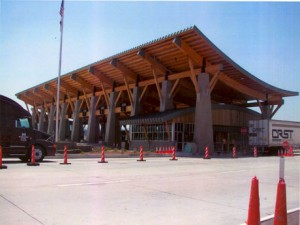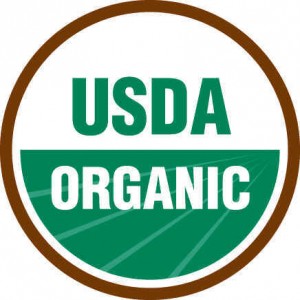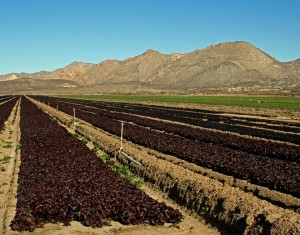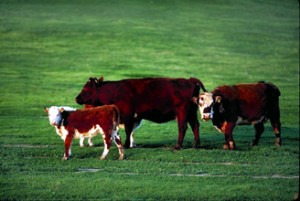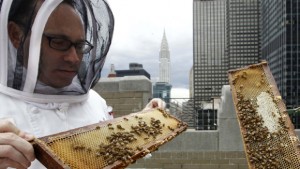 http://www.cbsnews.com/8301-201_162-57448205/urban-beekeeping-all-the-buzz-among-posh-hotels/
http://www.cbsnews.com/8301-201_162-57448205/urban-beekeeping-all-the-buzz-among-posh-hotels/
(CBS/AP) NEW YORK – An iconic hotel in the heart of midtown Manhattan is buzzing with thousands of tiny new visitors. But watch out: They’ll sting if you get too close.
Honeybees have taken up residence at the Waldorf-Astoria New York, one of New York City’s most famous institutions and a favorite stopover for many U.S. presidents. The hotel plans to harvest its own honey and help pollinate plants in the skyscraper-heavy heart of the city, joining a mini beekeeping boom that has taken over hotel rooftops from Paris to Times Square.
“Today about half the population of each hive, the foragers, are flying mostly in the direction of Central Park,” explained Andrew Cote, the Waldorf’s beekeeper-in-residence, on a recent sunny afternoon as he inspected each hive. “They’re plucking up pollen, nectar, water. They’re bringing it back to their hives, to their homes.”
Beekeeping is a natural fit for hotels trying to keep up with industry-wide pressure to “go green,” whether it’s retrofitting their buildings to make them energy efficient or simply adopting environmentally conscious practices. Enter urban beekeeping, a buzz-worthy pastime nowadays in light of the mysterious disappearance of honeybees in recent years, which led some state agriculture departments to encourage hobby beekeeping.
New York City lifted a ban on beekeeping inside the city limits two years ago, allowing the Waldorf and other aspiring beekeepers to keep hives on their roofs, CBS New York station WCBS-TV reports. The subsequent rise in beekeeping has come with some drawbacks, such as an uptick in random swarms around the city.
About one-third of the nation’s diet benefits from honeybee pollination, according to the U.S. Department of Agriculture. In New York City, the bees will help pollinate new trees that have taken root as part of the city’s plan to plant 1 million trees over the next decade.
“In terms of sustainability, it’s not only giving back to the environment,” said Andrew Gajary, general manager of the Intercontinental New York Times Square, which recently installed its first beehive, following in the footsteps of its counterpart in Boston, where a veritable colony of bees has been growing for the past year. “I’m no longer having to go out and get packaged honey from hundreds of miles away.”
Bee fever has even infected hotels beyond American shores. In Paris, the Mandarin Oriental Hotel ensconced its first hive this year and plans to hand out little honey pots as gifts for guests.
At the Waldorf, the insects are visible from certain rooms, and guests can sign up for tours of the hives — although they may want to put on a bee suit first.
“I don’t know how many times I was stung today, but I probably deserved each and every one and more,” Cote joked as he carefully lifted a bee-encrusted honeycomb out of a hive.
Cote is something of a celebrity in the beekeeping world, having waged a successful campaign against the city’s ban on keeping bees, which was lifted in 2010. He sells jars of honey at green markets throughout the city, tends hundreds of hives from Connecticut to Manhattan and founded the nonprofit Bees Without Borders and the New York City Beekeepers Association.
On the Waldorf’s roof, he was checking the hives for a healthy queen and for any signs of disease or swarm intentions. After lifting the wooden cover from each hive, Cote immediately doused it with smoke.
“The smoke makes the bees a bit more docile,” he said. “It calms them a bit. It also distracts them.”
In keeping with the Waldorf’s posh reputation, the bees arrived in a luxury car in April and were escorted through the lobby to their new home on the 20th floor roof deck. There are six hives in total; the most mature one already has 20,000 bees and counting.
The Waldorf’s first batch of honey is expected be ready for harvest by early summer.
“Honey’s such a versatile ingredient that we can use it anywhere,” said David Garcelon, the Waldorf’s executive chef, who has been experimenting with new honey-infused recipes.
There should be plenty of honey to go around. If all goes well, there could be as many as 300,000 bees camping out at the Waldorf this summer.
Cote couldn’t resist sampling some of the honey before finishing up his hive inspections. The prognosis?
“Nectar of the gods,” he said.





